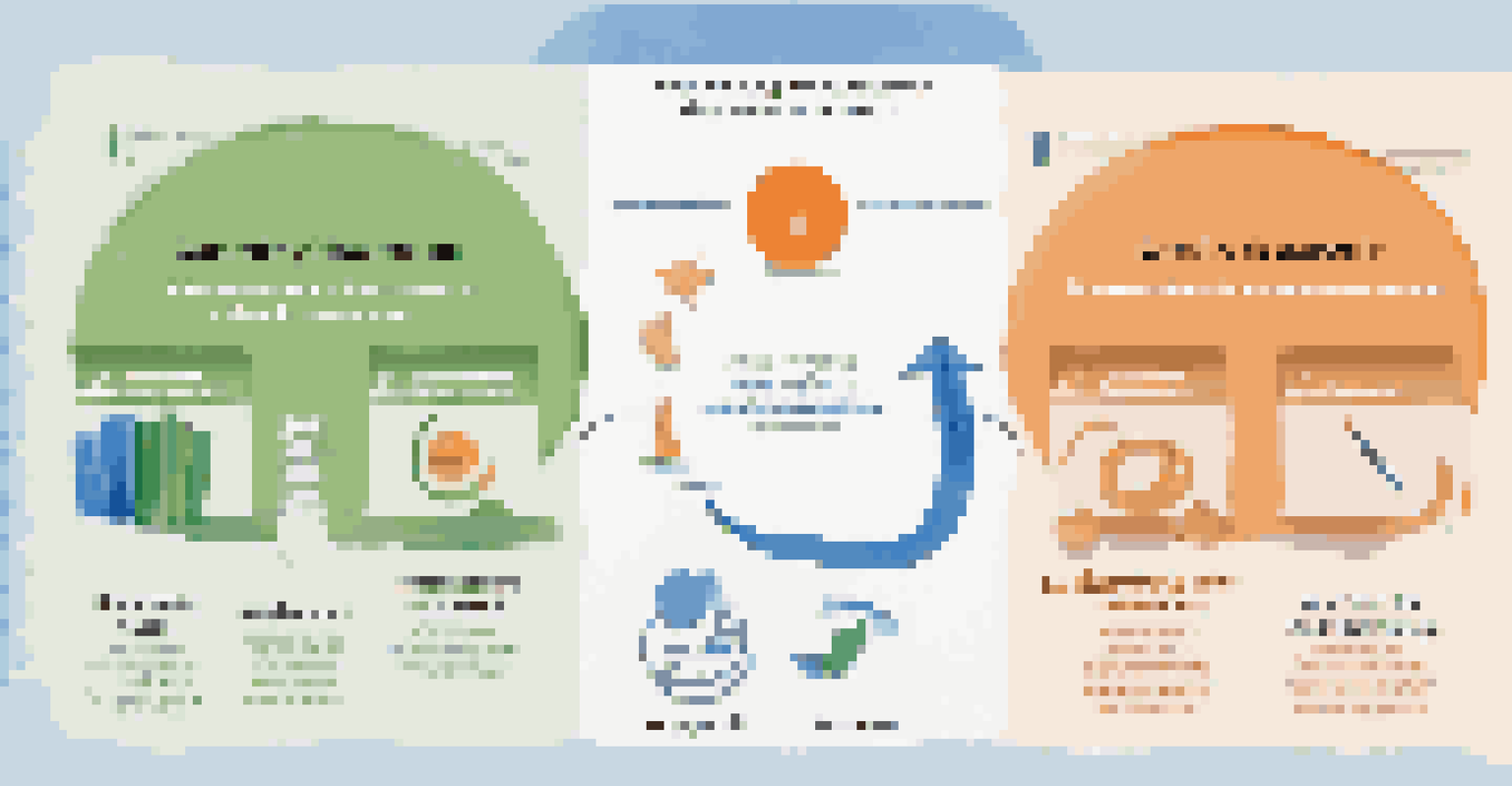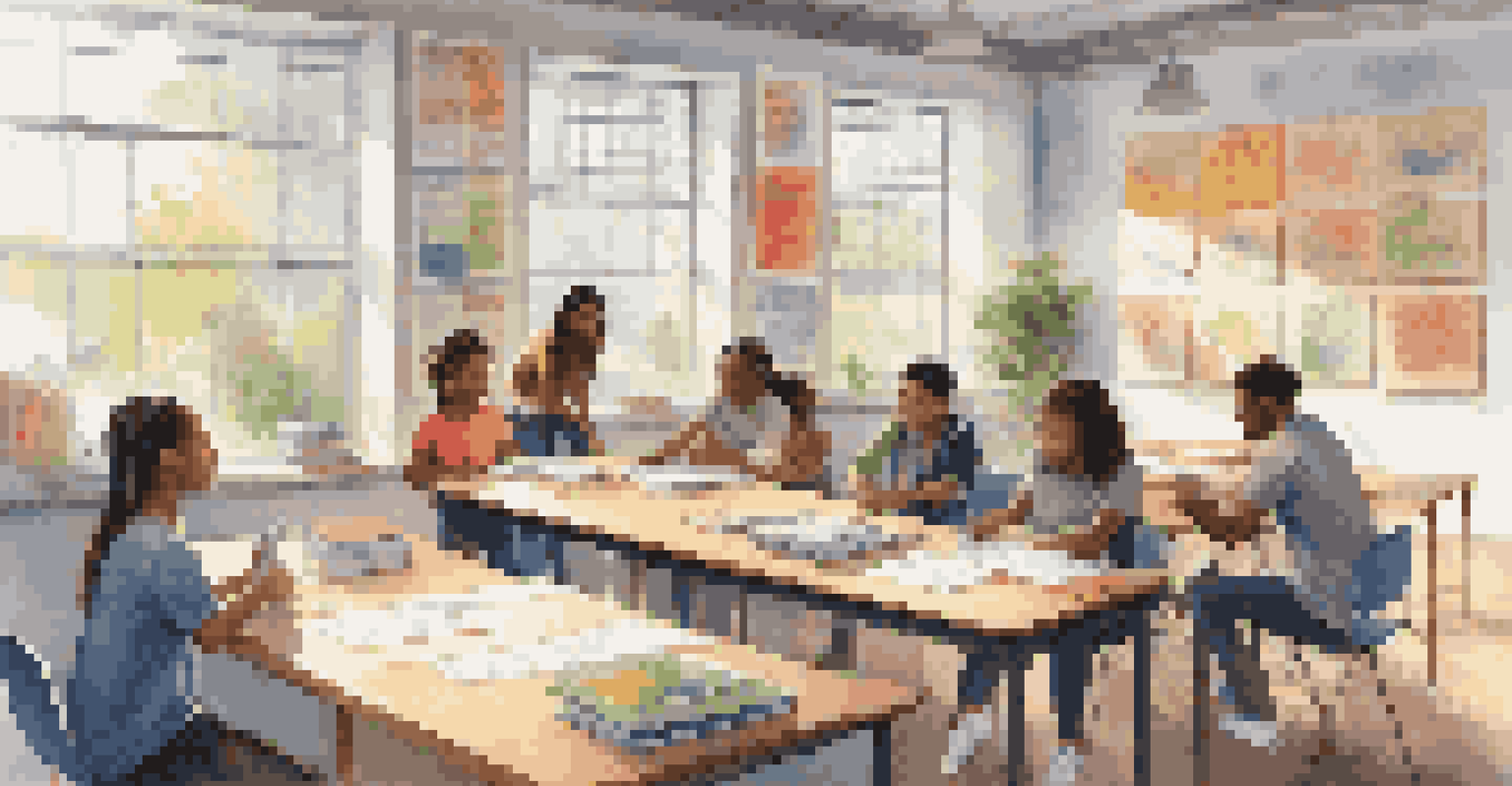Best Strategies for Blending Formative and Summative Assessments

Understanding Formative and Summative Assessments
Formative assessments are tools educators use to gauge student learning during the instructional process. These assessments, like quizzes or class discussions, help identify areas where students may struggle. In contrast, summative assessments evaluate student learning at the end of an instructional unit, often through tests or final projects. By understanding the distinct roles of these assessments, teachers can better integrate them into their teaching strategies.
Assessment is the bridge between teaching and learning.
Imagine a chef tasting a dish while preparing it—that's formative assessment in action, allowing adjustments before the final presentation. Meanwhile, a food critic's review of the completed dish represents summative assessment, providing a comprehensive evaluation at the end. Recognizing these two approaches helps educators see how they can work together to enhance student learning.
Ultimately, both types of assessments serve vital functions in the educational process. By clearly defining each type, teachers can strategically blend them to create a more cohesive learning experience for their students.
Creating Clear Learning Objectives
Before blending assessments, it's crucial to establish clear learning objectives. Defining what students should know or be able to do by the end of a unit provides a roadmap for both formative and summative assessments. These objectives guide the assessment design, ensuring they are aligned with the desired outcomes. Additionally, communicating these objectives to students empowers them to take ownership of their learning.

Think of learning objectives as the compass for a road trip; they help ensure you’re heading in the right direction. When students understand the destination, they are more likely to engage meaningfully with both types of assessments. This clarity fosters a sense of purpose and motivation.
Different Types of Assessments Matter
Understanding formative and summative assessments helps educators enhance student learning by strategically integrating both into their teaching.
Moreover, well-defined objectives facilitate the design of effective assessments. They allow educators to tailor formative assessments to check for understanding throughout the learning process, while also shaping summative assessments that accurately reflect student mastery.
Incorporating Continuous Feedback Mechanisms
Feedback is the bridge between formative and summative assessments. Continuous feedback during formative assessments helps students identify their strengths and areas for improvement. This ongoing dialogue fosters a growth mindset, encouraging students to embrace challenges and learn from their mistakes. When feedback is constructive and timely, it can significantly enhance student performance.
What we learn with pleasure we never forget.
Imagine being a gardener; regular watering and nurturing allow plants to grow strong. Similarly, consistent feedback helps students develop their skills over time. This approach not only prepares them for summative assessments but also builds their confidence.
Additionally, using feedback loops between formative and summative assessments can refine teaching strategies. By analyzing feedback from formative assessments, educators can adapt their instruction, leading to better outcomes in summative evaluations.
Utilizing Technology for Assessment Blending
Technology can be a game-changer in blending formative and summative assessments. With various digital tools, educators can create interactive assessments that provide immediate feedback. Platforms like Google Forms or Kahoot! allow for real-time quizzes, reinforcing learning while also making it fun. This instant feedback not only engages students but also informs teachers about areas needing attention.
Consider technology as a magnifying glass; it reveals details that might be missed in traditional assessments. By incorporating multimedia elements, such as videos or simulations, educators can cater to different learning styles while assessing students effectively. This versatility enhances the assessment process.
Clear Objectives Guide Learning
Establishing clear learning objectives provides a roadmap for assessments, empowering students to take ownership of their learning.
Furthermore, technology enables easier data collection and analysis, allowing educators to track student progress over time. This data can inform both formative and summative assessments, leading to more informed teaching decisions.
Designing Assessments That Foster Collaboration
Collaboration can enrich both formative and summative assessments. By incorporating group projects or peer assessments, students gain valuable social skills and learn from one another. Collaborative assessments encourage teamwork, critical thinking, and communication, which are vital skills in today’s world. This approach also allows students to take responsibility for their own learning.
Think of a band where each musician plays a part; together, they create a harmonious performance. Similarly, when students collaborate on assessments, they combine their strengths and perspectives, leading to deeper understanding and richer learning experiences. This synergy can enhance the quality of both formative and summative assessments.
Moreover, collaborative assessments can provide teachers with insights into group dynamics and individual contributions. This information can be invaluable when evaluating student performance and understanding their learning journey.
Encouraging Self-Assessment and Reflection
Self-assessment is a powerful tool in the learning process, allowing students to reflect on their understanding and progress. By incorporating self-assessment opportunities, educators can foster metacognitive skills, encouraging students to think about how they learn. This reflection empowers students to identify their strengths and areas for improvement, which can enhance their performance on summative assessments.
Imagine a mirror reflecting your image; self-assessment provides students with a way to see their learning journey clearly. When students take the time to assess their own work, they become more invested in their education. This practice not only promotes accountability but also builds confidence.
Collaboration Enhances Learning
Incorporating collaborative assessments fosters teamwork and critical thinking, enriching the learning experience for students.
Furthermore, incorporating self-assessment alongside formative assessments encourages a culture of continuous improvement. Students learn that assessment isn’t just about grades; it’s about personal growth and understanding.
Developing a Balanced Assessment Approach
A balanced assessment approach integrates both formative and summative assessments to create a comprehensive picture of student learning. By using a variety of assessment methods, educators can cater to different learning styles and provide multiple pathways for students to demonstrate their understanding. This balance ensures that no single assessment type dominates the evaluation process.
Think of a balanced diet; just as our bodies need various nutrients, students benefit from a mix of assessment methods. Combining quizzes, projects, and discussions can provide a fuller understanding of what students know and can do. This holistic view of assessment supports better educational outcomes.

Ultimately, developing a balanced approach fosters a positive learning environment. Students feel valued and supported, knowing that their learning is assessed through multiple lenses, leading to a more equitable educational experience.